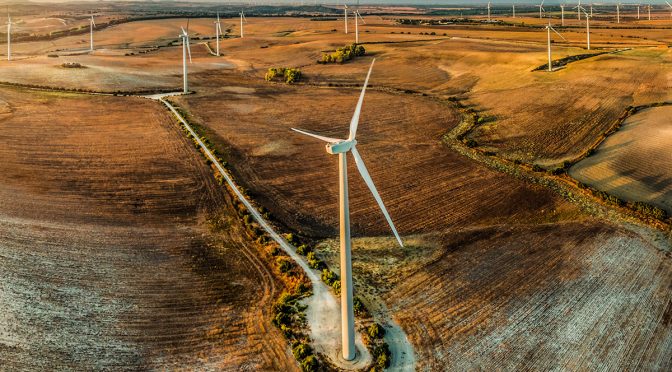Renewables covered 40% of the electricity demand, adding wind energy, hydraulic, biomass, concentrated solar power and photovoltaic.
The national electricity demand for the month of January is estimated at 22,704 GWh, 5% lower than that registered in January 2021. If the effects of the calendar and temperatures are taken into account, the figure is 3.2% lower than that registered in the same month of the previous year.
In January, and according to estimated data to date, generation from renewable energy sources represented 39.8% of the mix. For their part, technologies that do not emit CO2 equivalent (greenhouse gases) accounted for 60.6% of the total.
With the information available to date, in January the combined cycle was the main generation technology in our country and reached a share of 24.6%; followed by wind power which, with a total production of 5,355 GWH, was responsible for 22.1% of the total. Nuclear (20.8%), cogeneration (8.9%) and hydroelectric (8.7%) ranked third, fourth and fifth in terms of generation in January.
Despite the few hours of light offered in January, photovoltaic solar, the sixth technology in the mix with 1,503 GWh, has increased its production by 77.2% compared to the same month of the previous year, which is equivalent to 6.2% of the whole generation.
The demand for electricity falls by 5.6% in the peninsular electricity system
In the peninsular electricity system, the demand for this month is estimated at 21,479 GWh, 5.6% lower than that registered in January 2021. If the effects of the calendar and temperatures are taken into account, the demand is 3, 7% lower than the same month of the previous year.
During the month of January and according to the data estimated to date, 41.4% of peninsular generation has been of renewable origin and 63.2% of technologies that do not emit CO2 equivalent. Wind power has produced 5,293 GWh this month, 22.9% of the total, and is the leading technology on the Peninsula, followed by combined cycle (22.7%) and nuclear (21.8%).
As is the case at the national level, the peninsular photovoltaic solar plant experienced a great growth in its production in January since, compared to the same month of 2021, it has produced 78.6% more, reaching 1,470 GWh, an amount that is equivalent to 6, 4% of the total mix of the Peninsula.
The demand for electricity decreased by 1.2% in the Balearic Islands and increased by 11.8% in the Canary Islands in January
In the Balearic Islands, the demand for electrical energy in this month is estimated at 465,306 MWh, 1.2% lower than that registered in January 2021. If the effects of the calendar and temperatures are taken into account, the demand increases by 0, 8%.
The combined cycle, with 82.2% of the energy produced in the Balearic Islands, was the first source of electricity generation in the archipelago in January, followed by diesel engines (6.4%). This month, renewable energy that does not emit CO2 equivalent generated in the Balearic community represents 5.7% of the total.
In addition, during this month, the electricity from the submarine link between the Peninsula and Mallorca covered 6.5% of the Balearic Islands’ electricity demand.
For its part, in the Canary archipelago, the demand for electrical energy is estimated at 724,367 MWh, 11.8% higher than that registered in January 2021. If the effects of the calendar and temperatures are taken into account, the figure increases 11.6%.
The combined cycle, with 50.5% of the total, was the first source of electricity generation in January, while renewable and emission-free technologies reached 11.3% of production.


